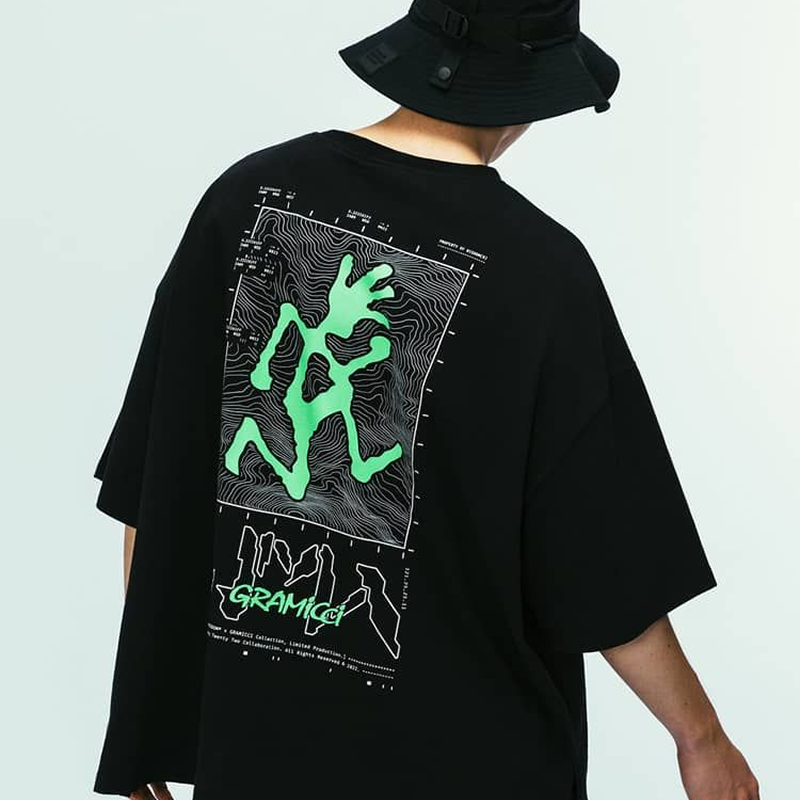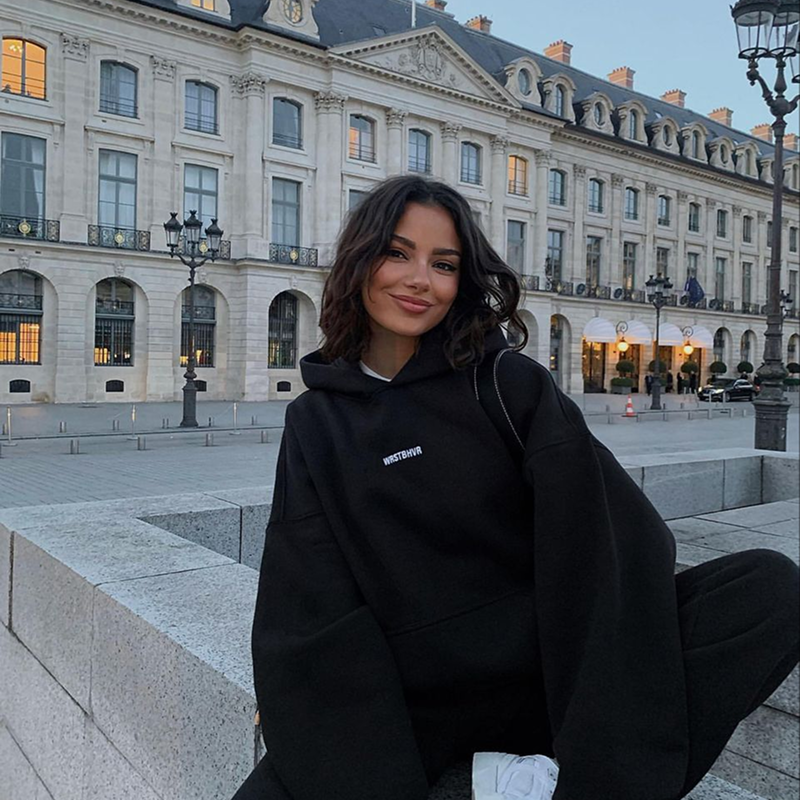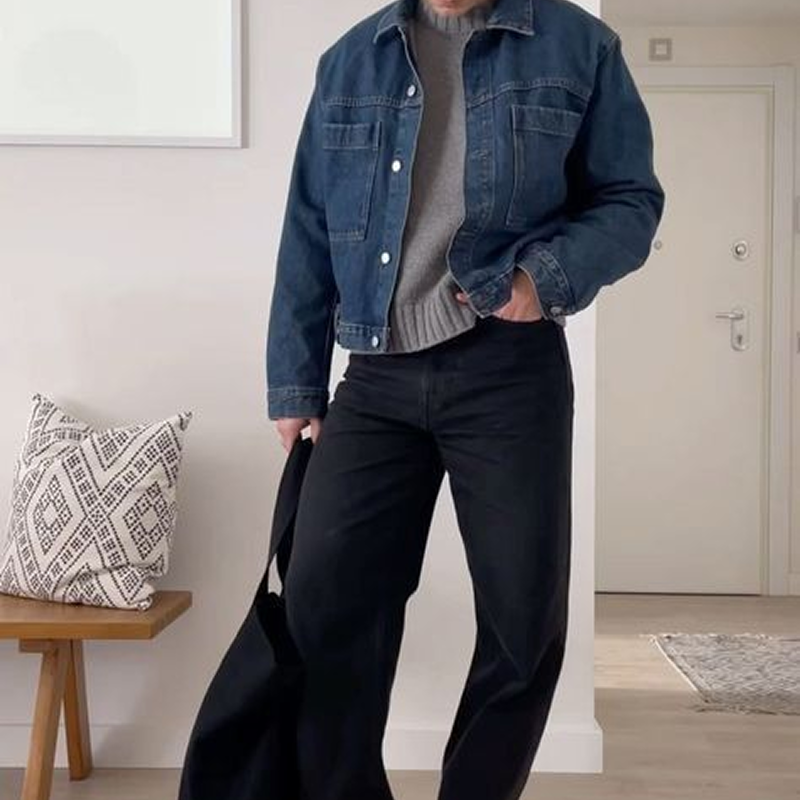1. A Quiet Revolution Woven in Cotton
It’s funny how something so simple can define an entire generation. A rectangle of cotton, stitched into a shape so ordinary it’s almost invisible, has somehow become the loudest voice in modern fashion.
The T-shirt — the most democratic item in our closets — has evolved far beyond utility. It’s no longer just an undershirt, a souvenir, or a merch staple. It’s a statement. A uniform. A language.
In 2025, the T-shirt has transcended trend cycles. It’s not fast fashion. It’s forever fashion. The kind of garment that isn’t about chasing hype, but about embodying a feeling — effortless confidence. The kind of piece that doesn’t scream for attention, but somehow turns heads.
You can trace its power in the streets of Seoul, Paris, or Los Angeles: clean silhouettes, heavy cotton, perfectly cut sleeves. Every detail is considered. Every proportion tells a story of taste and restraint.
The T-shirt is no longer what you wear; it’s how you wear it. It’s posture, presence, perception — an expression of you.
2. Minimalism as an Attitude
The first thing to understand about the modern T-shirt is that minimalism isn’t absence — it’s intention.
Every curve, seam, and hem is a deliberate choice.
Oversized but structured. Boxy yet balanced. Soft yet assertive.
The best tees don’t draw attention to themselves; they draw attention to how effortlessly they belong to you.
There’s a purity to it — the same feeling you get when you walk into a perfectly designed room or hear a single piano note echo through silence.
The modern tee embodies that exact serenity — the beauty of enough.
Minimalism in T-shirt culture is not about being plain. It’s about being precise. About letting fabric and fit speak louder than logos ever could.
That’s why weight matters. A heavyweight tee (around 250–300gsm) doesn’t cling or wrinkle; it drapes. It falls with intention.
It gives presence — the way a well-tailored suit once did, but stripped of all pretense.
Because the new luxury is not about excess. It’s about peace.
3. The Psychology of Effortless Cool
There’s a reason why certain people can walk into a room in a plain T-shirt and still look magnetic.
It’s not the brand, not even the cut — it’s the energy of ease.
In an age where fashion trends burn out faster than phone batteries, effortless style feels rebellious. It’s saying: I don’t need to perform. I just exist.
The modern T-shirt wearer doesn’t chase approval. They curate presence.
Think of that soft, washed grey tee you’ve worn for years — the one that fits like memory. It’s not just cotton. It’s identity, comfort, and confidence woven into one.
There’s an unspoken power in looking good without trying. It tells people you know who you are.
And that’s what fashion is gravitating toward — individuality that whispers, not shouts.
4. Fit: The Invisible Language of Style
Fit is the difference between casual and careless. Between cool and clumsy.
The 2025 silhouette celebrates proportion — the harmony of freedom and form.
The modern T-shirt is cut to flow. The shoulder seams drop slightly, creating that relaxed, street-luxury vibe. The torso has room to breathe. The hem hits just below the waistline, allowing layering to look organic rather than forced.
The sleeves? Slightly longer, grazing mid-bicep — enough to balance the frame and give subtle weight.
For minimalists, this cut feels architectural. For streetwear lovers, it’s foundation.
There’s something almost meditative about finding your perfect fit — like tuning an instrument. Once you find it, every outfit sings differently.
5. The Color Spectrum of Identity
While fashion often thrives on constant reinvention, the color palette of the modern tee has settled into quiet mastery.
Neutrals reign — white, black, bone, taupe, faded navy, charcoal.
These tones are timeless because they adapt. They work in every light, with every layer, in every mood.
White brings purity and precision — a blank page that amplifies everything else you wear.
Black, on the other hand, feels like armor — controlled, powerful, and infinite.
Earth tones ground you, literally. They echo nature, warmth, and human texture.
But don’t underestimate color.
A washed lilac tee under a denim jacket. A muted rust paired with cream cargos. These aren’t loud choices; they’re character choices.
Every shade communicates something deeper. Color is not decoration — it’s emotion.
6. Layering: The New Craftsmanship
Layering is where a T-shirt truly shines.
In isolation, it’s minimal. In composition, it’s art.
Imagine this:
A heavy white tee under an open overshirt.
A grey tee under a black bomber.
A cream tee peeking from beneath a sand hoodie.
Each combination shifts the energy. The tee becomes the bridge between contrast and cohesion — a translator of style.
Mastering layering is about balance — texture against texture, weight against weight. A cotton tee under a wool coat works because opposites attract. A tee under a silk shirt gives fluid luxury.
And the golden rule: visible layering should feel unplanned. The more effortless it looks, the more intention it took.
7. Texture and Material: The Feel of Quality
What separates an ordinary tee from a timeless one is touch.
In modern fashion, material is message.
Organic cotton. Combed jersey. Enzyme-washed fabric. Compact spun yarn.
Each of these details tells a story about care, quality, and consciousness.
You feel the difference when you wear it — the density, the softness, the breathability.
The shirt moves with you, not against you. It holds shape without stiffness.
Premium tees today also echo sustainability — not as a marketing slogan, but as an ethical baseline.
When you choose better materials, you’re not just buying fashion; you’re investing in longevity.
Good fabric doesn’t just look good — it ages beautifully.
8. The Streetwear Influence
Streetwear didn’t invent the T-shirt — but it reinvented how we see it.
In the 2010s, graphic tees became cultural currency. But in the 2020s, that evolved into what can only be described as quiet streetwear — the aesthetic of subtle rebellion.
The new icons don’t wear statement graphics. They wear balance.
Loose silhouettes. Heavy fabrics. Minimal text. Maybe a tonal logo, maybe not at all.
It’s about embodying the mood — not advertising it.
This is the aesthetic that dominates 2025: neutral tones, boxy cuts, and a feeling of clean defiance. It’s streetwear that’s grown up — matured, refined, and self-assured.
9. The Unisex Renaissance
Few garments are as universal as the T-shirt. It’s genderless by nature — adaptable, personal, limitless.
Its strength lies in how it transforms across bodies and styles.
A cropped box tee can empower. An oversized men’s tee on a woman redefines softness.
Gender in fashion is fluid now, and the T-shirt is its most perfect symbol — inclusive without trying.
This fluidity is what makes it endlessly creative. It adapts not just to your outfit, but to your identity.
10. The T-Shirt as Modern Uniform
When everything in fashion changes, some things remain.
The T-shirt is stability. It’s the baseline we return to when everything else feels overdesigned.
It’s what you reach for when you don’t want to think too much — and ironically, that’s what makes it so stylish.
Modern icons — from designers to musicians — have embraced this simplicity as part of their signature look. Think monochrome fits, relaxed silhouettes, timeless palettes.
It’s not laziness; it’s clarity.
A good T-shirt is not a backup plan. It’s the main character.
11. Beyond Fashion — The Philosophy of Ease
There’s something almost spiritual about ease.
In a world that glorifies hustle, the T-shirt reminds us to breathe.
It’s a rejection of chaos. It’s calm in fabric form.
When you wear a good tee — the right tee — your body language changes.
You move differently, slower, more deliberate. You stop competing.
It’s not just about style anymore. It’s about energy.
12. The Future of the Essential
As we move further into an age of digital saturation, fashion is finding meaning in simplicity.
The T-shirt — timeless, tactile, essential — is the antidote to excess.
We’re entering a phase where “less” truly is “more,” but not in a minimalist cliché.
It’s more human. More sustainable. More personal.
The next evolution of the T-shirt isn’t technological — it’s emotional.
Fewer pieces, higher quality, deeper connection.
Because when everything feels temporary, a good tee feels eternal.



